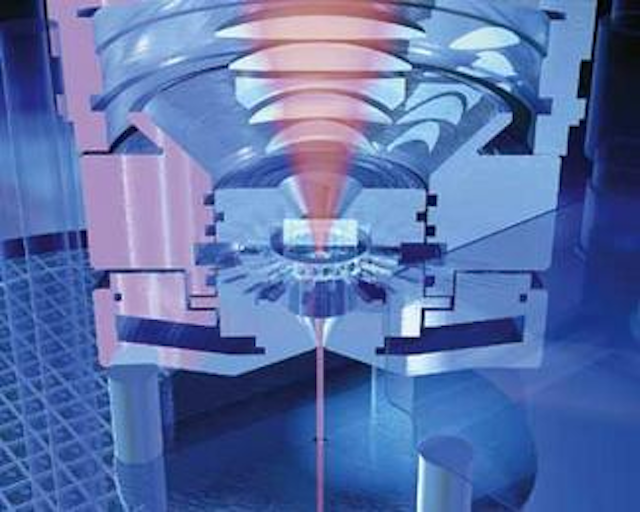A Upcoming Era of Precision: Manufacturing Cutting Innovations
Within the ever-evolving landscape of manufacturing, precision is not just a target; it is a requirement. As industries strive for increased effectiveness and precision, cutting technologies play a crucial role in defining the future of production. Among the various cutting methods available today, laser cutting and water jet cutting have emerged as leaders, each providing unique advantages that cater to a wide range of uses.

Laser cutting is known for its capability to produce intricate designs with remarkable precision, making it an excellent choice for detailed work and fine details. On the other hand, water jet cutting harnesses the power of high-pressure water, capable of slice through tough materials without inducing thermal stress. Collectively, these innovative techniques reshape the norms in manufacturing cutting, clearing the way for enhanced efficiency and creativity in production processes. As we delve further into the most recent developments and uses of these cutting services, we will explore how they are transforming manufacturing landscapes and establishing the foundation for future innovations.
Improvements in Laser Cutting Technology
Laser cutting methods has witnessed important progress over the years, revolutionizing the landscape of industrial cutting and manufacturing. Current lasers are now able of delivering higher power levels with increased efficiency, allowing manufacturers to cut through more substantial and varied materials than previously. This advancement is primarily because of enhancements in laser beam quality and the innovation of fiber lasers, which provide enhanced energy efficiency and precision in slicing operations.
One more key improvement is the integration of advanced software and automated systems into laser cutting systems. Sophisticated computer numerical control (CNC) technology enhances the exactness of cuts, allowing for detailed designs and difficult geometries to be produced quickly and with reduced waste. Additionally, the integration of live monitoring systems helps operators maintain optimal cutting conditions, further boosting productivity and reducing downtime due to breakdowns.
Additionally, green considerations have led to developments in laser cutting that emphasize sustainability. Contemporary lasers require fewer energy relative to previous technologies, reducing their carbon footprint. Additionally, the minimized waste produced in laser cutting operations aligns with industry demands for increasingly eco-friendly manufacturing practices. laser and waterjet cutting service to sustainability, alongside the progress in technology, establishes laser cutting as a crucial process for the prospects of precision manufacturing.
Benefits of Waterjet Fabrication
Water-jet cutting offers exceptional versatility, making it appropriate for a wide range of mediums including steel, granite, ceramics, and even hybrid materials. This flexibility enables manufacturers to undertake varied projects without the necessity for various cutting tools. Additionally, water jet technology does not emit heat into the cutting process, which reduces any heat distortion or harm to delicate materials. This trait is especially important for applications requiring meticulous tolerances and high-quality finishes.
Another noteworthy benefit of water-jet cutting is its eco-friendly nature. The process primarily uses water as its cutting medium, which means it produces fewer harmful emissions compared to conventional cutting methods that may involve harmful emissions or significant waste. Furthermore, the water is reusable, contributing to lower environmental impact and reducing operational costs associated with disposal. This aligns with the increased need for sustainable manufacturing practices in today’s manufacturing sector.
Waterjet cutting also enhances safety in industrial environments. Since the operation relies on a high-velocity stream of water, there is a lowered risk of flames or ignition sources that could lead to fires or harm. This promotes a more secure working environment for staff and minimizes the potential for damage to surroundings near the cutting area. As sectors continue to focus on safety alongside productivity, waterjet cutting stands out as a proactive solution for contemporary manufacturing obstacles.
Uses of Precise Cutting in Industry
Precision cutting technologies like laser cutting and waterjet cutting have found extensive uses across multiple sectors due to their flexibility and precision. In the aerospace industry, laser technology is utilized to manufacture intricate components with stringent tolerances. This process allows for the efficient design of parts that are vital for improving fuel efficiency and overall performance of aircraft. The capability to work with different substances, including metals and composites, makes this technology indispensable in the manufacturing of aerospace components.
The automotive sector also gains a lot from precision cutting services. Waterjet technology, known for its ability to handle difficult materials without inducing thermal distortion, is widely applied to produce complex shapes and elements in engine components and vehicle bodies. Manufacturers leverage this technology to enhance efficiency in production while maintaining strict quality standards, ultimately leading to better vehicle performance and security.
In the medical field, precision cutting is key for producing medical devices and surgical tools that demand high levels of accuracy and sterility. Both laser and waterjet cutting play essential roles in shaping materials such as titanium and stainless alloys, which are often used in implants and surgical instruments. The ability to achieve fine details and high-quality finishes contributes to both the functionality and the safety of medical devices, ensuring they meet stringent regulatory standards.